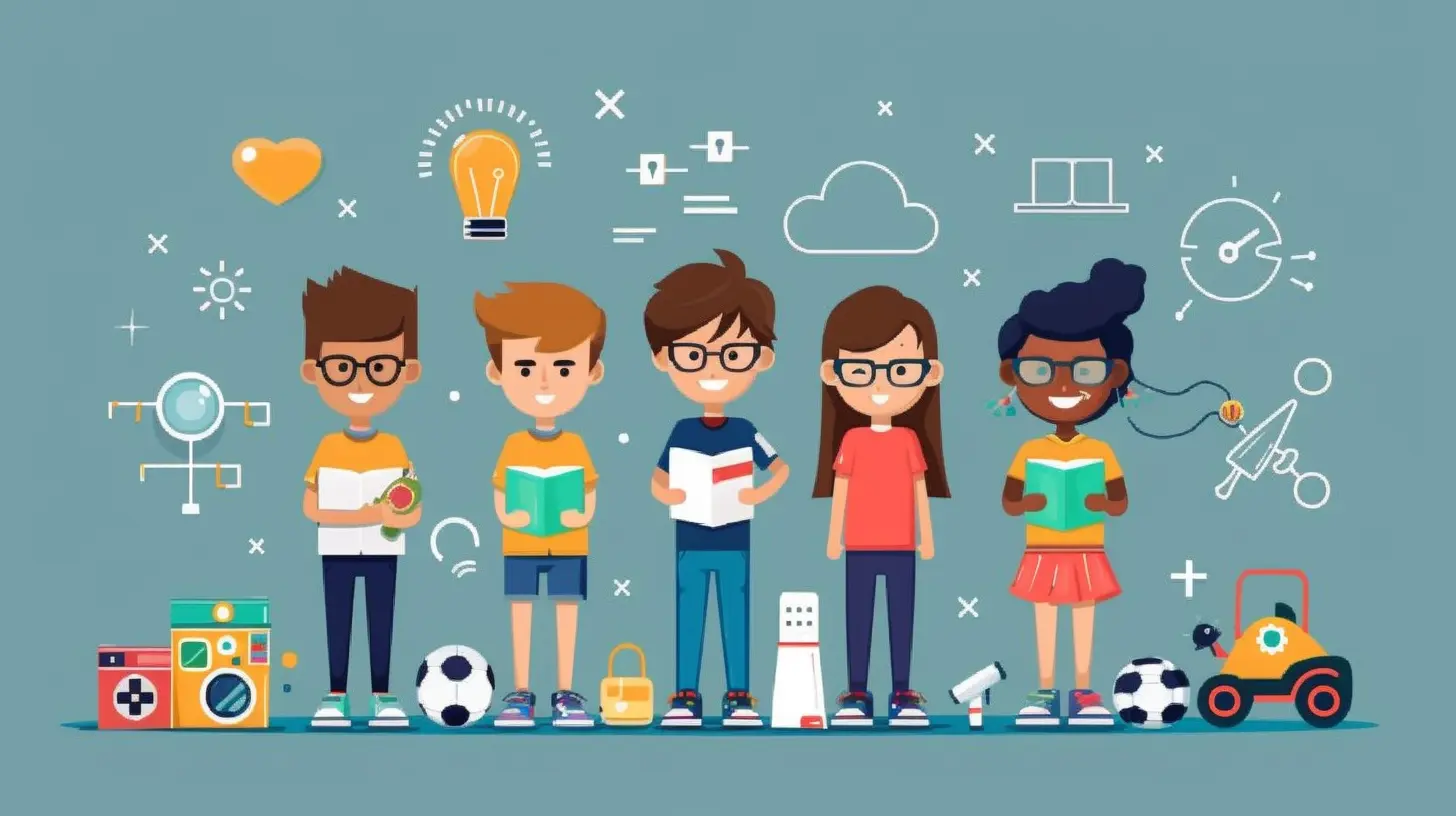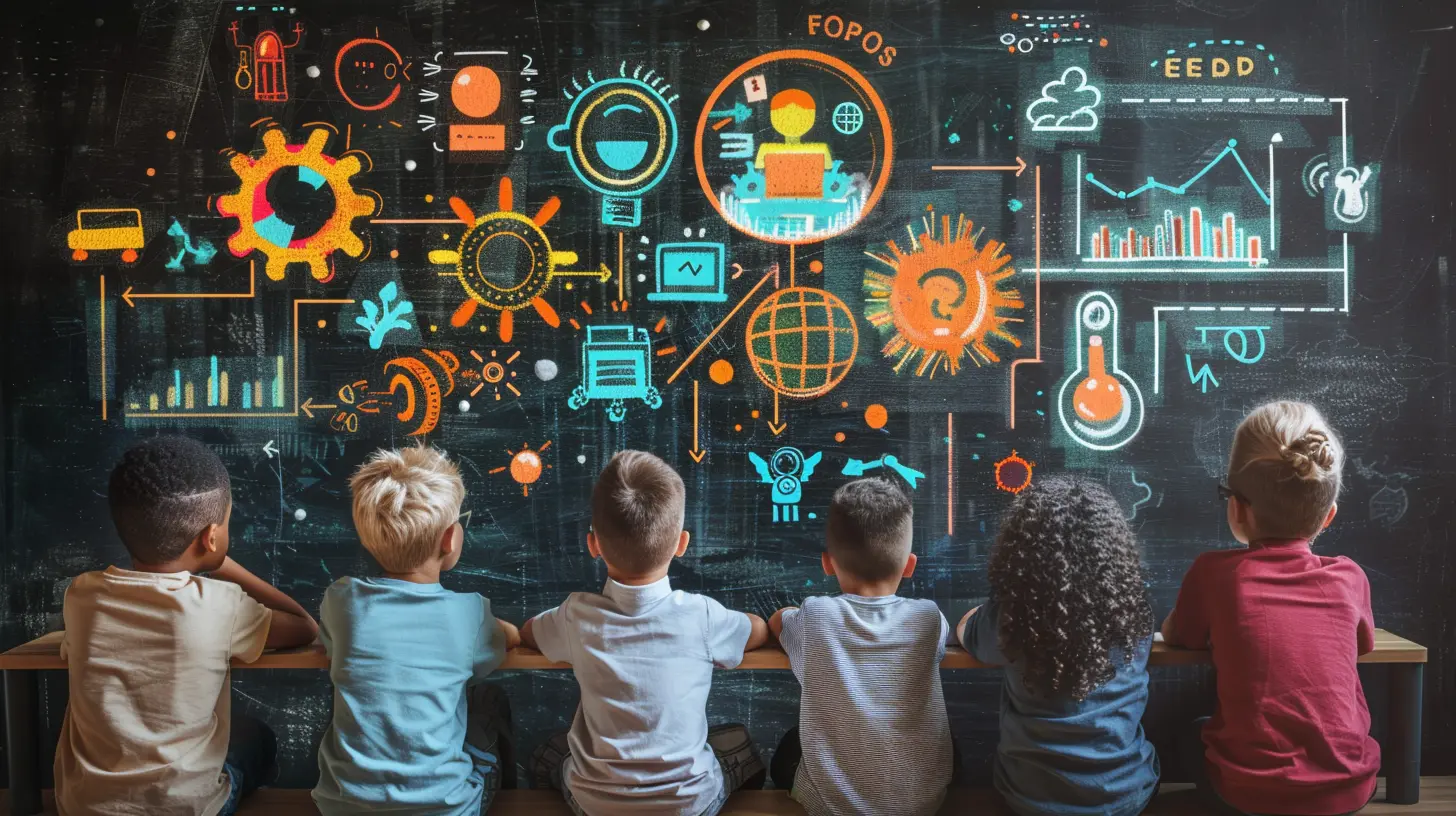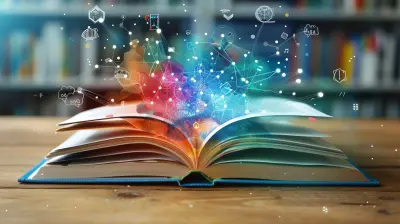Gamification in STEM: Making Learning Fun and Effective
2 October 2025
Introduction
Ever wondered why kids can spend hours playing video games but struggle to stay engaged in a 45-minute math lesson? The answer lies in gamification. By blending elements of game design with education, STEM (Science, Technology, Engineering, and Mathematics) learning can transform from a dull, tedious experience into an exciting, interactive adventure.
Gamification isn't just about adding points and badges—it taps into human psychology, making learning addictive, rewarding, and, most importantly, effective. But how does it work? And why should educators and parents take it seriously? Let’s dive into the fascinating world of gamified STEM learning.

What is Gamification?
Gamification is the process of integrating game-like elements—such as challenges, rewards, competition, and storytelling—into non-gaming activities. In education, this means incorporating mechanics like leaderboards, achievements, and interactive quests to motivate students and make learning enjoyable.Think of it this way: if traditional education is a plain salad, gamification is the delicious dressing that makes it irresistible.

Why Gamification Works in STEM
STEM subjects are known for their complexity, often requiring students to grasp abstract concepts. This is where gamification shines—it simplifies learning by making it interactive and engaging. Here’s why it’s so effective:1. Instant Feedback and Rewards
Games provide immediate responses to actions, keeping players motivated. Similarly, in a gamified classroom, students receive instant feedback on quizzes and assignments, reinforcing learning and encouraging improvement.2. Encourages Persistence
Failing in a video game doesn’t discourage players—it makes them try harder. When applied to STEM, students are more likely to persevere through challenges, treating mistakes as opportunities to improve rather than failures.3. Boosts Engagement and Enjoyment
A competitive leaderboard or a fun, interactive STEM challenge naturally captivates students more than a standard lecture. The excitement of achieving a new level or earning points keeps them coming back for more.4. Enhances Problem-Solving Skills
Many STEM-based games and challenges require critical thinking and problem-solving. By making students think like scientists and engineers, gamification fosters creativity and analytical skills.5. Encourages Collaboration
Multiplayer modes in educational games help students collaborate, share ideas, and work as a team—essential skills in STEM fields.
How Gamification Transforms STEM Learning
Let’s break down how gamification revamps each STEM subject to make learning a thrilling journey.Science: Turning Textbooks into Virtual Expeditions
Science is about discovery, but reading about gravity in a textbook can be far less exciting than experiencing it firsthand. Gamification bridges this gap:- Virtual Labs allow students to conduct experiments safely. Instead of mixing real chemicals, students can explore chemical reactions in a digital environment.
- Augmented Reality (AR) and Virtual Reality (VR) make learning immersive. Imagine students walking inside a human cell or exploring Mars from their classroom.
- Science Quests and Simulations challenge students to solve mysteries like a real scientist—whether it’s diagnosing a patient in a medical simulator or predicting weather patterns.
Technology: Learning to Code Through Games
Coding is often seen as difficult and tedious, but gamification turns it into an exciting challenge:- Platforms like CodeCombat and Scratch teach coding through interactive storytelling and challenges.
- Programming Games reward students for writing efficient code, much like how a game rewards players for solving puzzles.
- Hackathons and Coding Competitions turn learning into an adventurous competition, pushing students to innovate.
Engineering: From Theoretical Concepts to Hands-on Challenges
Engineering is all about problem-solving, and gamification helps bridge theoretical knowledge and real-world application:- Lego Robotics and Minecraft Education let students design structures, test physics principles, and build robots.
- Puzzle-Based Engineering Games like Bridge Constructor challenge students to design stable structures using real-world physics.
- Simulation Software mimics real-world engineering problems, allowing students to design everything from circuits to skyscrapers.
Mathematics: Turning Numbers into a Game
Math can feel like a chore, but gamification makes it feel like a game level waiting to be conquered:- Proficiency-Based Learning Games adjust difficulty based on the student’s skill level, ensuring they’re always challenged but never overwhelmed.
- Escape Room Math Challenges present problems that students must solve to "escape" within a time limit, making problem-solving thrilling.
- Point Systems and Badges reward accuracy and speed, turning practicing math equations into an engaging competition.

Real-World Examples of Gamification in STEM
Kahoot!
This popular tool turns quizzes into competitive learning games. Students answer questions in real-time, earning points based on accuracy and speed.Duolingo Math
Just like Duolingo helps learners master languages, its math version gamifies arithmetic problems with streaks, rewards, and daily challenges.Minecraft: Education Edition
This version of Minecraft allows students to build and experiment with real-world physics, logic gates, and chemistry elements—bringing STEM concepts to life.Code.org & CodeCombat
These platforms transform coding into an interactive challenge, making programming engaging for young learners.Challenges in Implementing Gamification in STEM
While gamification is powerful, it comes with its challenges:- Balancing Fun and Learning: Too much focus on rewards can overshadow actual learning.
- Accessibility Issues: Not all schools have the resources for high-tech gamified learning solutions.
- Keeping Students Motivated: Over time, rewards may lose their appeal if not varied properly.
- Teacher Training: Educators need to be trained in gamification strategies to integrate them effectively.
The Future of Gamified STEM Learning
The future of STEM education is undoubtedly gamified. With advancements in AI, VR, and AR, students might soon have personalized, immersive STEM lessons tailored to their learning styles. Imagine a world where students don’t just learn about quantum physics but experience it in a virtual world.As technology evolves, gamification will continue to revolutionize education, making STEM subjects more accessible, enjoyable, and effective for students of all ages.
Conclusion
Gamification is not just a passing trend—it’s a transformational approach to education. By making STEM subjects interactive, rewarding, and fun, we can inspire the next generation of scientists, engineers, and innovators.So, the next time you see a student glued to an educational game, don’t dismiss it as just playtime—it might be the most effective learning method they’ve ever experienced.
all images in this post were generated using AI tools
Category:
Stem EducationAuthor:

Monica O`Neal
Discussion
rate this article
1 comments
Jett Sheppard
Who knew equations could dance? 🎉 Let’s turn STEM into a thrilling adventure where calculators are sidekicks and learning feels like leveling up!
October 8, 2025 at 12:51 PM

Monica O`Neal
Absolutely! Gamification transforms STEM into an exciting journey, making learning engaging and enjoyable for everyone. Let’s keep the adventure going! 🎮✨


